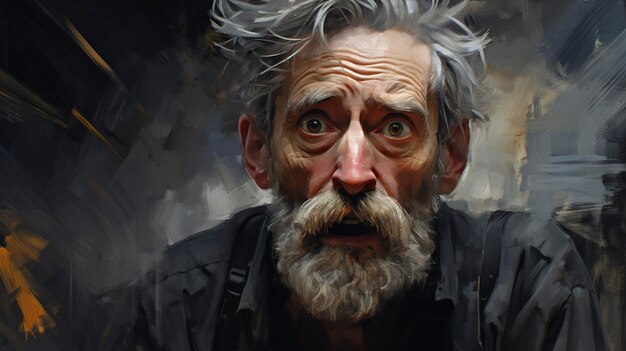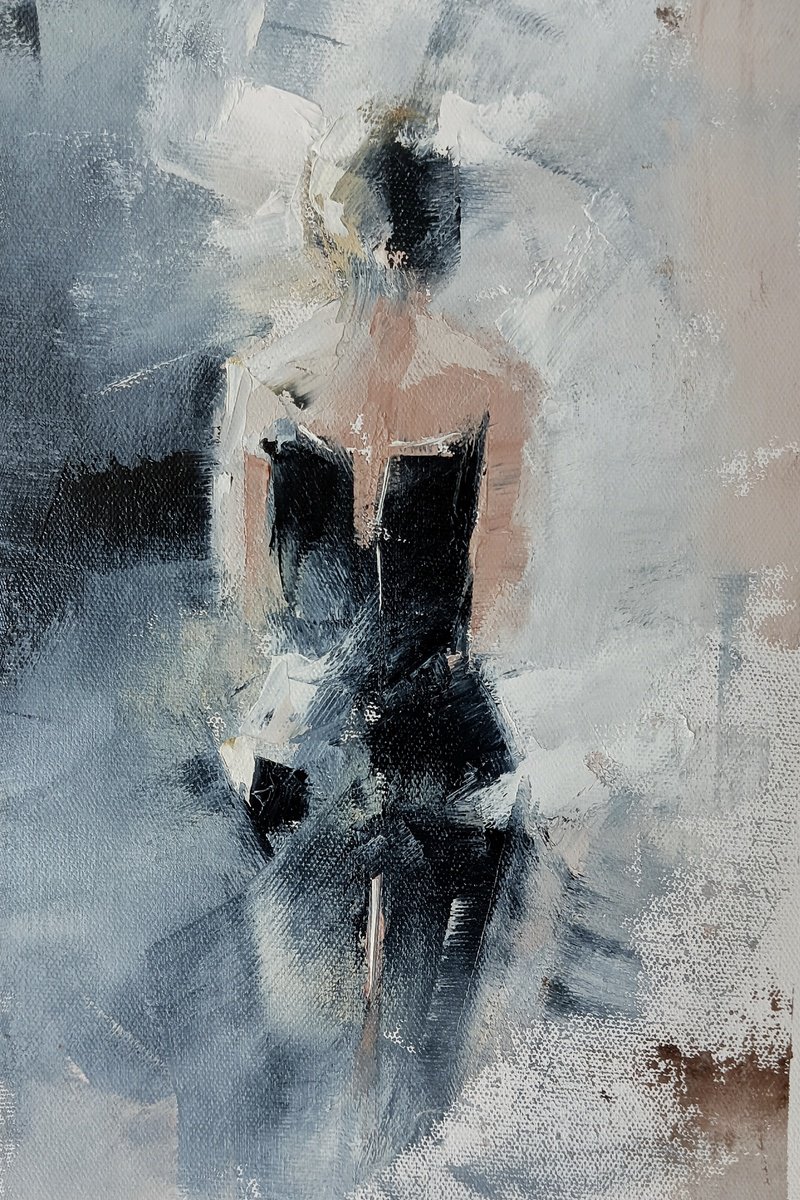Unveiling the Keys Behind Meaningful Figurative Oil Painting Styles
Unveiling the Keys Behind Meaningful Figurative Oil Painting Styles
Blog Article
The Evolution of Metaphorical Oil Paint: Recognizing Its Historical Importance and Modern Interpretations
The development of figurative oil painting acts as an engaging lens where to analyze the interplay between creative expression and historical context. From the meticulous naturalism of the Renaissance to the stirring power of the Baroque, each age has contributed layers of significance and method to this timeless tool. Contemporary musicians, attracting from this abundant heritage, are currently reinterpreting the human number in manner ins which challenge traditional stories. As we discover these transformations, one must consider exactly how the discussion between previous and present informs not only imaginative method but additionally societal reflections in a significantly complicated globe.
Origins of Metaphorical Oil Paint
The beginnings of metaphorical oil paint can be traced back to the early Renaissance in Europe, especially in the 15th century. The growth of oil paint allowed for greater depth of shade and information, enhancing the realism and vibrancy of their work.

In this transformative era, figures were often portrayed within contextually rich settings, showcasing not just their physical qualities however likewise their mental states. Pioneers such as Jan van Eyck and Titian harnessed the tool's adaptability, utilizing layering strategies to accomplish brightness and texture. This innovation facilitated the representation of complex materials and the subtleties of complexion, contributing to the growth of portraiture and narrative scenes.
Additionally, the Renaissance emphasis on humanism cultivated an admiration for distinctiveness, which in turn affected musicians to create even more relatable and dynamic figures - figurative oil painting. As a result, metaphorical oil painting became a powerful lorry for storytelling and psychological interaction, laying the groundwork for future creative movements and designs
Key Historic Movements
Substantial historical motions have shaped the evolution of figurative oil paint, each contributing one-of-a-kind viewpoints and strategies that expanded the tool's possibilities. The Renaissance marked a crucial moment, stressing realism and the human type, with musicians like Leonardo da Vinci and Michelangelo pushing the borders of physiological accuracy and viewpoint. Following this, the Baroque era brought remarkable contrasts of light and shadow, exemplified by Caravaggio, that infused spiritual themes with intense emotionality.
The 19th century presented Romanticism and Realism, where artists such as Delacroix and Courbet tested classical suitables, concentrating on individual expression and daily life. The arrival of Impressionism even more changed the medium by highlighting the results of light and color, causing a separation from conventional depiction.
In the early 20th century, motions like Expressionism and Cubism redefined metaphorical painting with abstraction and the exploration of emotional deepness. Each of these motions not only showed the societal changes of their times yet additionally prepared for contemporary interpretations. The interplay between these historical motions has actually produced an abundant tapestry of designs and ideologies, influencing modern artists in their pursuit of capturing the human experience on canvas.
Methods and Materials Evolution

Throughout the Baroque period, techniques such as chiaroscuro and sfumato emerged, boosting the psychological resonance of metaphorical structures. Artists began to explore glazes and impasto, manipulating appearance and luminance. By the 19th century, advancements like the use of pre-mixed paints in tubes reinvented accessibility, permitting musicians to paint en plein air and catch the fleeting results of light.
The 20th century experienced the introduction of artificial pigments and tools, which broadened the palette and modified the uniformity of oil paints. Furthermore, the exploration of new application strategies, such as combination knives and brushes of differing rigidity, further varied artistic expression. Collectively, these developments show the progressing partnership in between materials, techniques, and the imaginative vision inherent in metaphorical oil paint.

Contemporary Interpretations
Contemporary analyses of metaphorical oil paint show a vibrant discussion in between practice and innovation, where artists challenge established norms and explore diverse themes. This evolution manifests in various ways, as contemporary artists blend classical techniques with modern concepts, often dealing with social, political, and personal narratives.
Numerous specialists draw inspiration from historic jobs, yet they instill their pieces with contemporary perspectives, making use of the human kind as a lorry for discourse on gender, identity, and society. Artists progressively try out abstraction, Learn More distortion, and multimedias, which permits a broader interpretation of the number and its context.
Furthermore, making use of vibrant color schemes and unusual structures usually offers to interfere with typical viewing experiences, prompting vital engagement from target markets. This shift in emphasis prolongs past appearances; it shows a growing understanding of the complexities of human experience in an interconnected globe.
As figurative oil paint continues to progress, it remains an essential medium for discovering the nuances of modern life, embodying both a regard for heritage and a commitment to modern idea. The result is an abundant tapestry of expression that reverberates with the complexities of the modern-day human condition.
Effect on Modern Art
The impact of figurative oil paint on modern-day art is profound, as it has consistently inspired a myriad of imaginative activities and practices throughout the 20th and 21st centuries. From Expressionism to Surrealism and beyond, the expedition of the human number has actually remained a central theme, enabling musicians to share intricate feelings and narratives. This emphasis on figurative depiction has resulted in a re-examination of standard methods, causing cutting-edge approaches that blend realism with abstraction.
Moreover, contemporary artists have embraced figurative oil painting as a way to address social and political issues, utilizing the medium to challenge perceptions of identity, sex, and society. The renewal of rate of interest in figurative operate in current years mirrors a wishing for link in a significantly electronic world, where human experience and emotion are paramount.
Additionally, the discussion in between figurative oil painting and modern-day art appears in the jobs of artists such as Kehinde Wiley and Jenny Saville, who make use of historic referrals while infusing their pieces with modern significance. Eventually, figurative oil paint remains to shape and redefine modern-day creative expression, underscoring its long-lasting relevance in the art world.
Verdict
The advancement of figurative oil paint highlights its historical value and versatility across numerous creative movements. From the naturalism of the Renaissance to the stirring expressions of the Baroque and the innovative strategies of modernity, this medium has continuously transformed. Contemporary analyses reflect vivid colors and unconventional make-ups, promoting vital engagement with political and social themes. Inevitably, figurative oil painting continues to be a vital medium for discovering the human experience, resonating greatly in today's digital landscape.
The evolution of figurative oil paint offers as an engaging lens you can try this out through which to take a look at the interaction in between artistic expression and historical context.Considerable historic activities have actually shaped the evolution of metaphorical oil paint, each adding unique viewpoints and methods that broadened the tool's opportunities.As historical movements shaped the trajectory of figurative oil paint, the products and techniques employed by artists have likewise undertaken significant improvements. figurative oil painting.The impact of metaphorical oil painting on modern-day art is profound, as it has actually consistently inspired a myriad of imaginative movements and practices throughout the Get More Info 21st and 20th centuries.The development of metaphorical oil painting emphasizes its historical importance and versatility across various artistic motions
Report this page